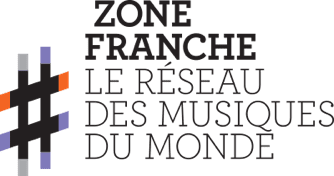In the 70’s: committed young people with a taste for globalisation and revisiting their heritage
In the early 1970s, the Arab world was a heterogeneous group of young nation states from North Africa, East Africa, the Indian Ocean and the Middle East, most of which had gained their independence between the 1920s and 1960s.
The pan-Arab ideal – in vogue in the 1960s – was undermined by the ideological and political division of leaders and the Arab coalition’s defeat during the six-day war with Israel in 1967.
Yet, young people in these countries aspired to establish a new era of society and began dreaming about emancipation and openness, as well as of a strong cultural identity in an increasingly globalised world.
At the same time, modern Arabic music, which stood out from traditional scholarly and popular repertoires, was contemporary and avant-garde, integrating electric instruments, Western arrangements and creative processes similar to pop, rock, funk and other amplified music in fashion at the time. This gave rise to bands of many different kinds, all tempered to the quarter tone, ternary rhythms and other regional singularities.
Legendary groups and artists such as Les Golden Hands, Ibrahim El Hassan, Abranis, Ziad Rahbani and Cedars in particular spring to mind. We also saw the emergence of the Neo-Traditional trend, which drew on age-old traditions to develop modern song-writing composition, such as Cheikh Imam, Marcel Khalifé and Nass El Ghiwane.
Les abranis - Amliyi
Marcel Khalifé – Rita
While some purists called it blasphemy – blaming these aesthetics for killing or impoverishing the soul of “Arabic” music and its authenticity – the artists who embodied these movements resisted the bigotry of their predecessors and today, contemporary music largely dominates the market in most countries, especially with regard to variety and popular music, the primary focus for the cultural consumption of the Arab streets.
In the 80-90’s: electric popular varieties, the early days of Arab jazz and experiences of the diaspora
In the 1980s, musical production experienced a significant aesthetic turning point with the predominance of synthesisers and other digital organs with a new pop, kitsch and globalised sound, allowing artists from the Arab world to replace string and percussion orchestras with electronic sounds played by a single musician. This was the explosion of the current version of rai, dabkeh, chaabi and other popular traditional genres that underwent a sound revival and audience renewal. It was also the explosion of music videos – just like everywhere else – which replaced scopitones and musicals. The leading figures in this variety were Khaled, Najat Aatabou, Georges Wassouf, Ragheb Alama and Assala Nasri, to name but a few.
We also witnessed the birth of the first jazz experiments, often with musicians living in Europe, such as Rabih Abou-Khalil and Anouar Brahem. This was a sophisticated music that fed off rich improvisational jazz to bring out the diversity of Arabic music, both in terms of rhythms and scales.
Ragheb Alama – Moghram Ya lail
Khaled – Didi
Anouar Brahem – The Astounding Eyes Of Rita
At a local level, as well as in the diaspora – more discreetly but with more unbridled creativity and unabashed political commitment – we witnessed the birth of alternative and urban Arabic music, heir to the 1970s scene. This is more prolific today, whereas in the 1980s and 90s, with the exception of bands like Carte de Séjour and the Barbès National Orchestra – settled in the West and supported by the music industry – independent Arab production remained limited due to the authoritarian regimes that governed these countries and prevented the emergence of a free alternative culture.
Carte de séjour – Douce France
Orchestre national de Barbès - Alaoui
This handful of artists would be the spokespersons for young people experiencing significant social upheaval, sowing the seeds of rap in the Maghreb, with pioneers like MBS and Muslim, and alternative rock and electro-pop in the Middle East, with Scrambled Eggs and Soapkills. The blend of traditional and modern grew with flagship bands like Gnawa Diffusion. A special mention must also go to Rayess Bek, the Lebanese rapper (baptised “the MC Solaar of the Middle East” at the time), the first alternative Arab artist to be signed to a major label!
Muslim - Yali Tebni Wt3ali
Soapkills – Menni Elak
Gnawa Diffusion – Hmoum Zawalia
In the 2000’s: an alternative and hybrid scene versus “sanitised” and manufactured pop
The alternative music scene exploded in the early 2000s and reached a peak of creativity and diversity unmatched in the last five years, most likely galvanised by the “Arab Spring” and the new freedom of speech earned in several Arab countries. We witnessed the emergence of genuine stars from this scene, such as the rock bands Hoba Hoba Spirit and Mashrou’leila, real regional phenomena with a wide audience, and rappers like Karkadan, Bigg and Shadia Mansour. Electro did not miss out, with trendsetters like Duoud, Hello Psychaleppo, Maurice Louca and Deena Abdelwahed. As for the diaspora, we saw the rise of highly sophisticated projects, a true synthesis of cultures, such as the progressive electro-rock work of Speed Caravan, the dark pop of Bachar Mar-Khalifé, the cool retropop of Alsarah and The Nubatones, Narcy’s politically-engaged rap, and Soolking’s trap-rai.
Mashrou’leila – Lil watan
Shadia Mansour - AL Kufiyyeh 3arabeyyeh
Deena Abdelwahed – Khonnar
Alsarah & The Nubatones – Ya watan
In terms of variety and popular music, the trend followed that of the 1990s, but incorporated more electro and hip-hop elements. It gradually moved away from the original styles to mirror American pop mixed with “khalijis” – North African rhythms – and the development of highly manufactured figures with “perfect” plastic beauties and polished vocals. It calls to mind Eastern babes like Elissa and Haifa Wehbé and dark handsome strangers from the Maghreb like Hatim Ammor and Saad Lamjarred.
Hatim Ammor - Albak Yemchi Lhalo
Haifa Wehbe – Touta
When it comes to jazz, a significant number of artists have emerged in recent years, encouraged by more accessible training in the conservatories in their home countries and the success of Arab jazz musicians abroad. The diaspora has produced one of the stars of world jazz, the French-Lebanese Ibrahim Maalouf, who has enjoyed extraordinary success in recent years, selling out concerts at the world’s leading jazz events and some of France’s biggest venues.
Ibrahim Maalouf – Beirut
But what would these artists be without the support of venues, events and tireless stakeholders on the ground and abroad? Our friends at Arabesques, in particular, a magnificent festival in Montpellier that kicks off this week and will see some of the names mentioned above come together. Now Europe’s oldest festival dedicated to the Arab world, don’t miss it!


